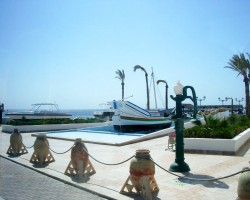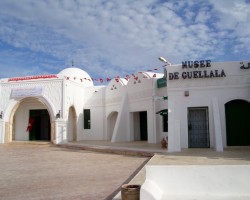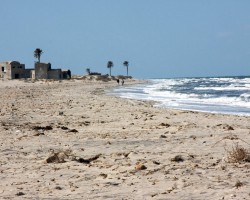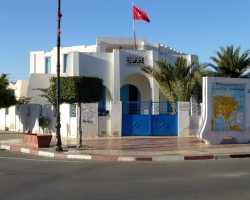Best time to go to Djerba for a perfect weather and where to go?
When is the best time to go to Djerba?
There is not really a best time to visit Djerba, as the island can be visited all year round and temperatures are pleasant throughout the seasons. However, for swimming and lazing around, prefer the summer season, which extends from May to November. Indeed, thanks to its beautiful sunny days, warmth tempered by the gentle sea breeze, and perfect water temperatures, it remains unbeatable. If you are looking for a dream destination for a sunny holiday, Djerba is a very good option!
However, be prepared to face large crowds, especially in August, as this period coincides with school holidays for Tunisians as well as Europeans. Moreover, with relatively high accommodation prices and airfare rates, the travel budget is quite substantial.
When is the best time to go to Djerba to avoid the peak tourist season and not break the bank? Opt for the shoulder seasons, May-June and September-October, which offer a good compromise. The budget is then reasonable, there are plenty of tourist activities, and the Mediterranean Sea is very pleasant for enjoying the beach.
The period between November and April is not to be ruled out for a stay in Djerba. Even if the water is a bit too cold for swimming, the atmosphere is mild, rainfall is very rare, and the sun is omnipresent. To escape the winter greyness, relax, and stroll in peace, this is the right time! However, evenings can be quite cool: remember to bring warm clothes to cover up.
Annual weather on the island of Djerba
For information about the climate and the weather city by city on the island of Djerba for a specific month, click on the corresponding line below:
| Month | Our opinion | View Details | |||
|---|---|---|---|---|---|
| January | 63°F | good weather | |||
| February | 63°F | good weather | |||
| March | 65°F | good weather | |||
| April | 68°F | good weather | |||
| May | 74°F | perfect weather | |||
| June | 79°F | perfect weather | |||
| July | 85°F | perfect weather | |||
| August | 86°F | perfect weather | |||
| September | 85°F | perfect weather | |||
| October | 79°F | perfect weather | |||
| November | 72°F | perfect weather | |||
| December | 65°F | good weather |
Best time to travel to Djerba by cities
Climate and Weather on the island of Djerba
The island is located in the Gulf of Gabes, off the coast of Tunisia. It is therefore at the crossroads of Mediterranean and Saharan air masses. Djerba's climate is dry and "semi-arid," resembling a hot and dry steppe climate. Temperatures remain pleasant throughout the year, although they rise slightly further south in the summer. Djerba's weather is tempered by the presence of the sea.
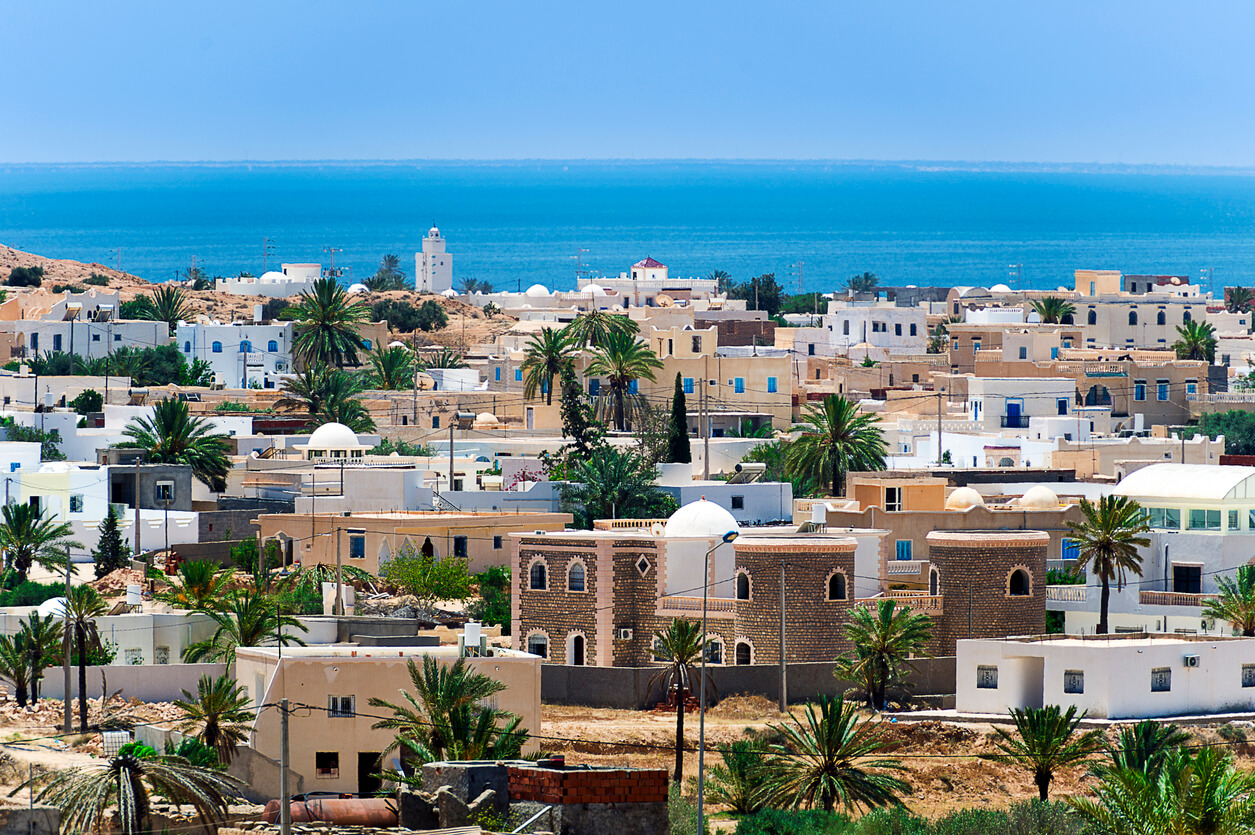
Summer in Djerba
Between June and September, temperatures in Djerba are warm, but rarely stifling:
- By late June, it is 24°C (76°F) at night, 26°C (79°F) during the day, and around 24°C (76°F) in the water. It is the perfect time for outdoor activities such as hiking.
- In July, expect temperatures to be 3°C (38°F) higher, both in the air and in the sea.
- In August, the mercury rises even further: averages are 28°C (83°F) at night and 30°C (86°F) in the middle of the day. The water temperature peaks at 28°C (83°F) . It is the hottest month of the year and heatwaves can occur, especially in the south of the island.
- In September, temperatures are similar to July, but the water remains warm for longer. As autumn approaches, some showers are to be expected, but they are short-lived and the sun quickly returns.
Overall, the entire season is very dry, with virtually no precipitation during this time.
Autumn in Djerba
Autumn in Djerba is reminiscent of an Indian summer. Temperatures remain summer-like until the end of October, or even mid-November depending on the year: it is 24°C (76°F) at night, 26°C (79°F) during the day, and 25°C (77°F) in the water. From November onwards, daytime highs drop to 22°C (72°F) , but the water remains warm at around 23°C (74°F) . November is the wettest month of the year, but rains are sporadic and quickly give way to very sunny weather. In December, expect temperatures to be 4°C (40°F) lower, but the sun remains ever-present.
Winter in Djerba
The winter climate in Djerba is very mild:
- In December, it is still 18°C (65°F) during the day, and the sea is warmer with an average of 19°C (67°F) . Depending on the year, it is entirely possible to spend Christmas on the beach!
- In January and February, it is the “coolest” period of the year. Temperatures are around 14°C (58°F) at night and 17°C (63°F) during the day. The water also becomes colder, with maximum temperatures not exceeding 16°C (61°F) until the end of the season.
- In March, the thermometer rises by a degree and spring is already here.
Like in the transitional seasons, showers are possible but very rare, occurring lightly 1 to 3 days per month during this period.
Spring in Djerba
From late March to June, temperatures gradually rise. While it is between 18 and 20°C (68°F) at the beginning of the season, May already shows very pleasant temperatures with 23°C (74°F) at the hottest part of the day. It is also from this month that you can lounge on the beach and swim as the water reaches around 21°C (70°F) .
Regarding precipitation, it may rain, but the phenomenon is anecdotal. At most, it is a light rain that passes quickly.
Temperatures and rainfall on the island of Djerba
On these 3 graphs, we present the evolution of temperatures of Djerba and month-by-month rainfall for the cities of Houmt El Souk, Ajim, Erriadh, Guellala and Mellita, as well as the month-by-month sea temperature for coastal cities.
Peak visitor numbers and tourist seasons on the island of Djerba
Find out when Djerba has its high tourist season (the period when the influx of tourists is highest) and off-peak tourist season using our data and figures.
Tourist seasons on the island of Djerba
The months with low numbers of tourists are: January, February, March, June, July, September, October, November and December. The number of visitors to Djerba is high in: April, May and August.
- Very low season on the island of Djerba: January, February, March, June, November and December.
- Low season on the island of Djerba: July, September and October.
- High season on the island of Djerba: April and May.
- Peak season on the island of Djerba: August.
Figure: Visitor index for Djerba month by month
Where to go on the island of Djerba?
This table allows you to see the maximum temperature for each city and our opinion on the weather month by month (see colour legend below the table).
| Cities | jan. | feb. | mar. | apr. | may | jun. | jul. | aug. | sep. | oct. | nov. | dec. |
| Houmt El Souk | 63°F | 63°F | 65°F | 68°F | 74°F | 79°F | 85°F | 86°F | 85°F | 79°F | 72°F | 65°F |
| Ajim | 63°F | 63°F | 65°F | 68°F | 74°F | 79°F | 85°F | 86°F | 85°F | 79°F | 72°F | 65°F |
| Erriadh | 63°F | 63°F | 65°F | 68°F | 74°F | 79°F | 85°F | 86°F | 85°F | 79°F | 72°F | 65°F |
| Guellala | 63°F | 63°F | 65°F | 68°F | 74°F | 79°F | 85°F | 86°F | 85°F | 79°F | 72°F | 65°F |
| Mellita | 63°F | 63°F | 65°F | 68°F | 74°F | 79°F | 85°F | 86°F | 85°F | 79°F | 72°F | 65°F |
| Midoun | 63°F | 63°F | 65°F | 68°F | 74°F | 79°F | 85°F | 86°F | 85°F | 79°F | 72°F | 65°F |
Legend:
perfect weather
good weather
About Djerba
What can I do on the island of Djerba?
Beaches / swimming
Nature and countryside
Culture and heritage
Sports
Family travel
Crafts / shopping
Gastronomy
Nightlife
Is this weather information for Djerba reliable?
Climate data for Djerba has been gathered every day since January 2009. The analysis of these meteorological data for Djerba allows us to determine the average for each month in Houmt El Souk, Ajim, Erriadh, Guellala, Mellita and Midoun.
So yes: this data is reliable except in cases of temporary climate disruption in the region.


